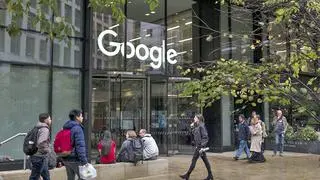“At 600 metres, take the first right. Continue for 5 km. In 500 meters, turn left. Your destination is on the left.” While almost every one travelling by car is familiar with the voice instructions given by various GPS devices or applications, it is anything but easy for mapping companies to chart the course out for map users.
In a country like India, which follows no standard address system,mapping companies are working overtime to come up with accurate maps.T
They deploy an army of field surveyors, mapping vehicles and combine it with algorithms to continuously improve and update existing maps.
Delhi-headquartered MapmyIndia has been surveying Indian roads for 25 years now. “We have 400 field surveyors and mobile mappingvehicles. In the earlier days, our field staff would collect data going door to door. Now we are creating a digital map twin of the 3D real world,” Rohan Verma, CTO and ED of MapmyIndia told BusinessLine.
Nexus with ISROThe company uses technology to capture data from cars and from top of trains to get accurate maps.
It works with Indian Space Research Organisation (ISRO) for using satellite imagery as well as Bhuvan, a software application that lets users explore a 2D/3D representation of the earth’s surface.
“We are using real world sensors and trying to model the real world digitally,” Verma adds.MapmyIndia releases a new map update every quarter and allows consumers and enterprises to report any issues and modifies its maps accordingly.
Crowd sourcingGoogle Maps, one of the most used mapping services, too uses third parties and a combination of machine language-based algorithms to improve existing maps. “We are open to feedback from citizens. They can report a data problem, can send app feedback or add missing places while participating in the Local Guide Program, which incentivises users to contribute data about the places they have been to,” Sanket Gupta, Program Manager, Google Maps said.
Many features of Google Maps have even been inspired by the unique scenarios for Indian users.
Like the lack of any consistent street nomenclature led Google Maps to start using landmarks forguidance, especially during navigation.
Offline maps“Another feature we developed keeping India in mind is Offline Maps, which was conceived here and has now expanded to other countries. India is amongthe top five countries using Offline Maps today,” Gupta pointed out.
More interestingly, Google Maps has introduced an Indian accent for navigation besides Plus Codes–short codes that pinpoint locations that don't have an address. “All this is helping make Google Maps accessible to a wider audience across India,” he added.
Bengaluru-based Latlong, another provider of mapping services, is helping users locate retail stores on maps. Currently, it is working with 50 regional and national brands. “We providelocation based services to enable an omni-channel store locator. We make sure that the stores are updated on maps all the time,” Latlong CEO Rahul R Sindaghatta said.
The company maps and manages a brand’s digital presence, enabling customers to access store information and driving directions from multiple channels. “We use a combination of manpower and technology tools like geo coding and other custom tools to narrow down a location and build accuracy,” he said.
While Latlong is a relatively new player in the field, Sindaghatta is not intimidated by the competition from biggies in the space.
“There is a huge need for real time updated, Indian-style maps. I am sure there is enough and more to do in the Indian mapping space. There is a lot to be done in the smaller towns where accuracy needs to be updated,” he added.








Comments
Comments have to be in English, and in full sentences. They cannot be abusive or personal. Please abide by our community guidelines for posting your comments.
We have migrated to a new commenting platform. If you are already a registered user of TheHindu Businessline and logged in, you may continue to engage with our articles. If you do not have an account please register and login to post comments. Users can access their older comments by logging into their accounts on Vuukle.